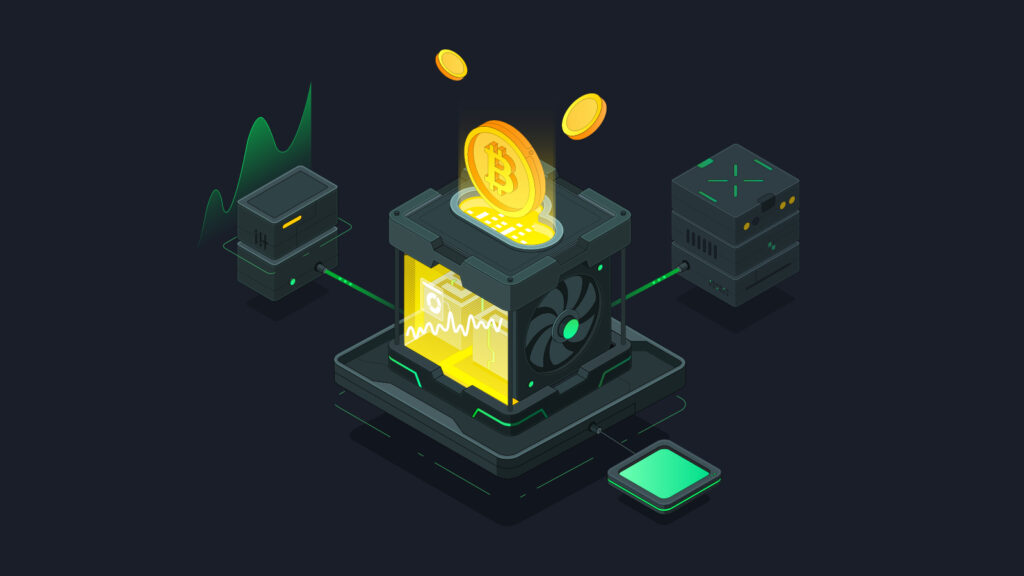This guide will explain what passive income is and explore 13 methods you can use to start earning passive income within the crypto space.

What is passive income?
Passive income is not a new notion. For a long time, the financial industry has provided several techniques of generating passive income. For example, when using a savings account, individuals simply put monies into their account and earn interest. There are various solutions available in the crypto market that enable individuals to make passive money in a similar fashion. It’s a strategy that creates a return with little input from the individual, and it may sometimes be as simple as locking your crypto up on an exchange for a set length of time.
Earning passive income still comes with its risks, however, but overall it is considered a relatively safe and simple strategy. Here are 13 methods you can use to generate passive income within the crypto market.
1. Running lightning crypto nodes
The first method to earn passive income would be to run crypto nodes. More specifically, to run a lightning node on the Bitcoin network. This can potentially generate passive income for node operators who earn fees for routing transactions through their nodes. This occurs on Bitcoin’s Lightning Network (LN) — an L2 scaling solution allowing faster and cheaper transactions.
However, keep in mind that running the LN demands technical knowledge, hardware, software, and a robust internet connection. If you have the knowledge and resources to run a node, this is a good way to earn passive money.

2. Staking
Staking is a process that occurs on a Proof-of-Stake (PoS) blockchain network. It’s one of the most popular methods of earning passive income. It requires little effort, all you need to do is lock your crypto up for a certain period of time. In return, you receive rewards in the network’s native cryptocurrency.
Depending on the network, this can come in the form of new tokens or transaction fees. Staking is a low-risk method of earning passive income, especially for long-term crypto traders.

3. Liquidity mining
Liquidity mining is another popular way to earn passive income from cryptocurrency. This has become popular due to the rise of decentralized exchanges (DEXes) and swap pools. Essentially, DEXes require liquidity pools that are used to facilitate transactions of a certain token. These tokens come from community members, called liquidity providers. They deposit their tokens into a liquidity pool, which is just a smart contract for the DEX. In exchange, users receive passive income for contributing to running the DEX.

4. Yield farming
Another popular way to generate passive income is through yield farming. Depositing cryptos into yield-generating pools on DeFi platforms is a practice. This is a common approach to generate passive money, but it requires investigation owing to the wide range of DeFi protocols available. Yield farming takes significantly more attention than the other approaches we’ve explored thus far. This is related to the fact that returns are volatile.

5. Decentralized crypto lending
Crypto lending is one of the most popular ways of earning passive income in the entire industry. Similar to liquidity mining, with this method, all you have to do is deposit your crypto into a lending pool. Once again, users must conduct thorough research when it comes to selecting the best crypto lending service.
The interest comes from borrowers who borrow the coins that you deposited. They are expected to return the funds in the agreed amount of time and pay interest rates. The entire process is all facilitated but the use of smart contracts. Lenders must also provide some sort of collateral, this safeguards the lender.
6. Cloud mining
Coins such as Bitcoin are highly popular and very difficult to mine. However, mining Bitcoin is still very rewarding, which is why people are so interested in the process. One option that they have is to turn to cloud mining. Cloud mining is a service offered by cloud mining companies that let you borrow their computational power. All they need is for you to commit a small portion of funds.
Essentially, you purchase a mining plan in order to rent their computational power. In exchange, they allow you to use their mining gear, and you receive a portion of the gains. That way, you can mine coins that are difficult to mine individually without buying mining gear yourself.

7. Crypto games
Halfway down the list, we have one of the most enjoyable ways to earn passive income in crypto. That is to play crypto games. Most crypto games today adopt the Play-To-Earn (P2E) model, meaning you can earn while playing. Different games offer different deals. Some of PvP games reward you for winning matches against other players. Other games let you mine or collect valuable resources and earn them by selling them.
8. Airdrops
Another popular way of earning cryptocurrencies passively is participating in airdrops. Airdrops are performed by crypto projects or sometimes crypto exchanges. What this means is that they’ll send free cryptocurrencies to users who fulfill certain requirements. Airdrops are often performed by new crypto projects that seek to distribute their assets. Often, such projects may be supported by exchanges or other larger projects.

9. Crypto savings accounts
An additional method of earning passive income within the crypto space is by using crypto savings accounts. These are similar accounts to the ones offered by traditional banks. However, these ones are available on crypto exchanges — centralized exchanges, to be precise. Apart from exchanges, there may also be other specialized platforms that offer such services.
10. Dividend-earning tokens
In tenth spot, we have dividend-earning tokens. As the name suggests, these are crypto tokens that have some regular dividend rewards for their holders. Although this isn’t common, certain tokens have this mechanism built into their code. One example is VeChain (VET); you earn Thor (VTHO) by holding it. Alternatively, you can get KuCoin Shares (KCS), which will grant you a share of KuCoin’s transaction fees.
11. Master nodes
We spoke earlier about operating crypto nodes when we mentioned the Lightning network and its nodes. However, you can also find a blockchain network like DASH that has something called a Master Node. These master nodes are crypto nodes that can receive rather large payouts. They don’t earn transaction fees but a portion of blockchain rewards.
The likelihood of an average person running a master node is somewhat low, due to their scarcity. However, if you ever get a chance to run a master node, this can be a very profitable way of interacting with crypto.
12. Mining
Of course, traditional crypto mining is also a very common way of earning passive income. You only need to select a blockchain network that runs a Proof-of-Work consensus mechanism. Bitcoin is a prime example but is also a difficult and expensive coin to mine. Other options include Dogecoin, Litecoin, and many other cryptos with similar blockchain technology.
During the mining process, you provide your computational power and electricity to the project’s algorithm. The algorithm uses these resources to verify transactions and pack them into blocks. Once the blocks have been created, you receive a reward in the form of the network’s native cryptocurrency. Remember that mining can be expensive, so it matters which coin you mine.
13. Affiliate programs
Lastly, we have participation in affiliate programs. A lot of projects and exchanges like to use their community members to gain new members. This is a common practice in the retail industry, so by no means is it unique to crypto.
Similar to the retail industry, you get your own affiliate link which you can share anywhere.
If people come to the platform and register via your link, you get paid. You can use this method if you have your own website or if you write a blog. This has also been very popular among social media influencers. They even offer discounts to those who use their specific link or code.
Reference by OKX
Disclaimer
This article may cover content on products that are not available in your region. It is provided for general informational purposes only, no responsibility or liability is accepted for any errors of fact or omission expressed herein. It represents the personal views of the author(s) and it does not represent the views of Scruzer. It is not intended to provide advice of any kind, including but not limited to: (i) investment advice or an investment recommendation; (ii) an offer or solicitation to buy, sell, or hold digital assets, or (iii) financial, accounting, legal, or tax advice.


Leave a Reply